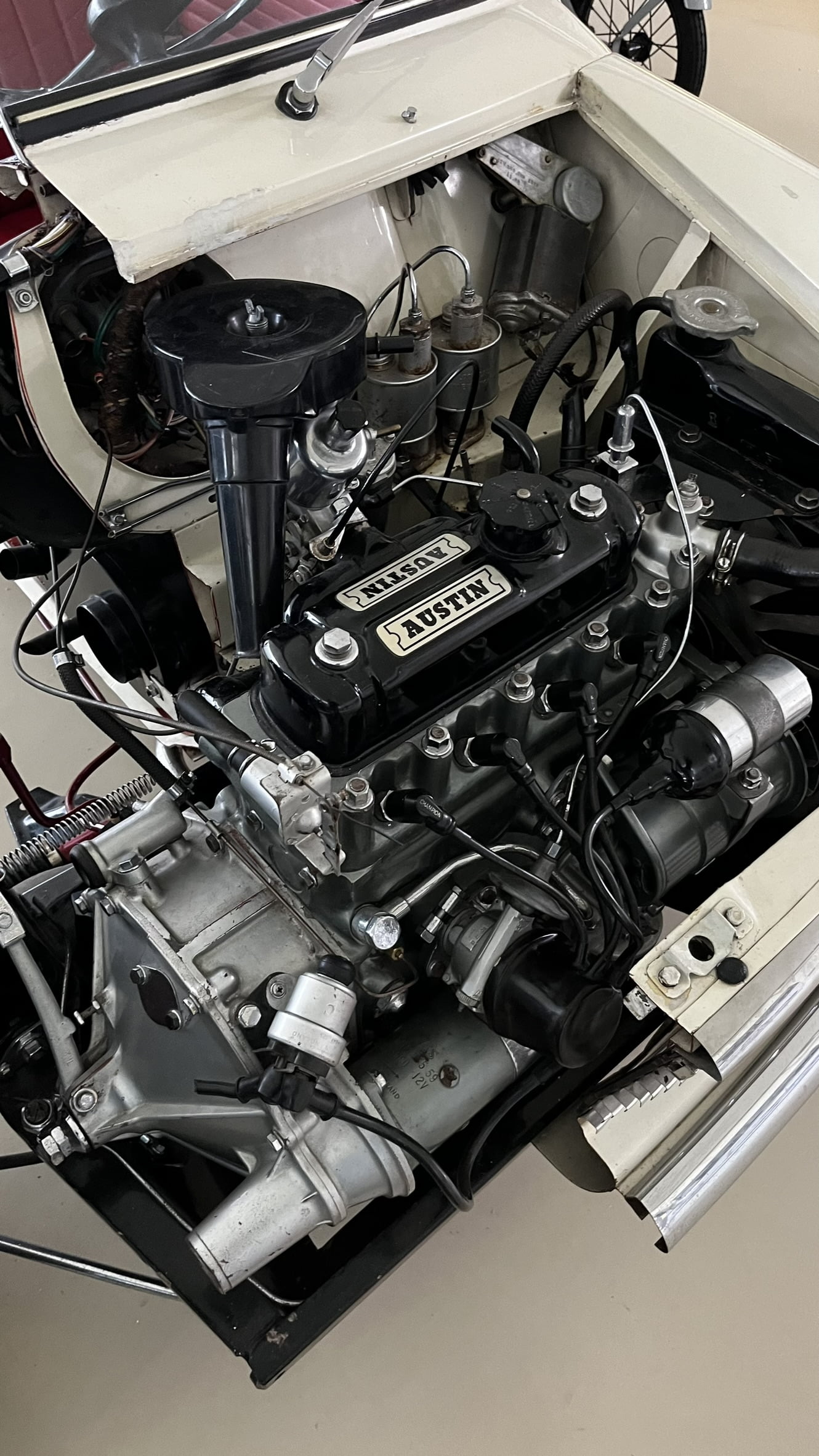1959 Morris Mini-Minor
The Morris Mini-Minor, introduced in 1959, is one of the most influential cars in automotive history. Designed by Sir Alec Issigonis for the British Motor Corporation (BMC), the Mini-Minor was a revolutionary compact car that combined innovative engineering with a charming design. Known simply as the “Mini,” this iconic vehicle not only redefined small car design but also became a cultural symbol of the 1960s. Its impact on the automotive world is still felt today, making the Morris Mini-Minor a timeless classic.

The origins of the Morris Mini-Minor can be traced back to the mid-1950s when BMC faced a pressing need to develop a small, fuel-efficient car in response to the Suez Crisis, which had caused fuel shortages and rising prices. Sir Alec Issigonis, an engineer renowned for his work on the Morris Minor, was tasked with designing this new vehicle. His goal was to create a compact, affordable car that could comfortably seat four adults while maximizing fuel efficiency and maneuverability. Issigonis and his team employed several innovative design principles to achieve these objectives. They opted for a transverse engine layout, which positioned the engine sideways in the engine bay, coupled with front-wheel drive. This configuration allowed for a more spacious interior and improved handling. The Mini’s compact size, with a length of just over 10 feet, made it ideal for navigating crowded city streets and tight parking spaces.
The Morris Mini-Minor featured a distinctive and charming design that quickly captured the public’s imagination. Its boxy shape, with minimal overhangs and a wide stance, provided a surprising amount of interior space for its size. The car’s upright seating position and large windows offered excellent visibility, contributing to a sense of spaciousness. One of the Mini’s most notable design elements was its “wheel at each corner” layout, which maximized interior space and improved stability. The small 10-inch wheels were positioned at the far corners of the car, enhancing its agility and handling. The suspension system, using rubber cones instead of traditional springs, provided a comfortable ride and further contributed to the car’s nimbleness. Inside, the Mini’s minimalist dashboard and straightforward controls reflected Issigonis’s focus on practicality and simplicity. Despite its compact dimensions, the car offered ample legroom and headroom for passengers, making it a practical choice for urban driving and short trips.
The Morris Mini-Minor was powered by an 848cc four-cylinder engine, producing 34 horsepower. This modest engine was mated to a four-speed manual transmission and was capable of propelling the car to a top speed of around 70 mph. While not a powerhouse, the Mini’s lightweight construction and efficient design made it lively and enjoyable to drive. The front-wheel-drive layout provided excellent traction and handling, particularly in wet or slippery conditions. The car’s small size and tight turning circle made it exceptionally maneuverable, allowing drivers to easily navigate through congested city streets and narrow lanes. The Mini’s combination of performance, economy, and practicality made it an instant hit with a wide range of buyers.



The Morris Mini-Minor quickly became more than just a practical small car; it evolved into a cultural icon. Its affordability and distinctive design made it popular across various demographics, from young drivers to families and even celebrities. The Mini’s association with the swinging sixties and its appearances in films like “The Italian Job” further cemented its status as a symbol of the era. In motorsport, the Mini also proved its worth. The performance-oriented Mini Cooper and Cooper S variants, developed in collaboration with racing driver John Cooper, achieved remarkable success in rallying. The Mini Cooper S famously won the Monte Carlo Rally three times in the 1960s, showcasing the car’s agility and durability. The Mini’s production continued for several decades, with various updates and iterations. By the time production ended in 2000, over 5.3 million Minis had been built, making it one of the most successful and enduring cars in automotive history.